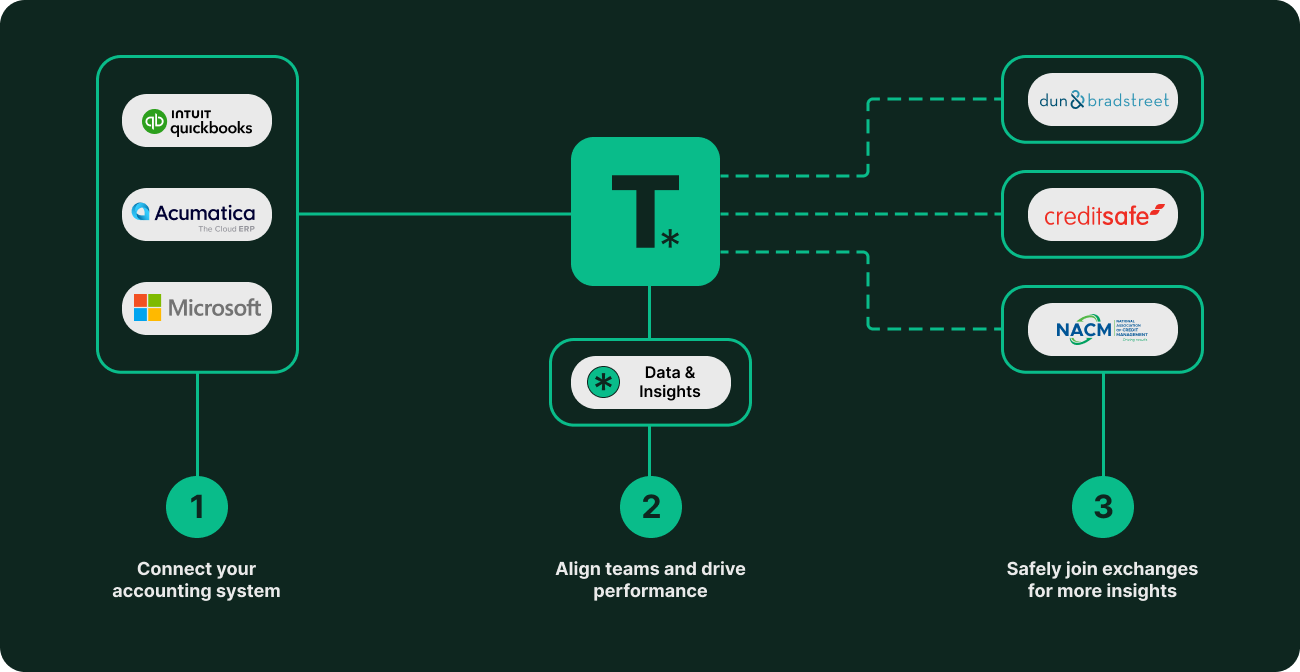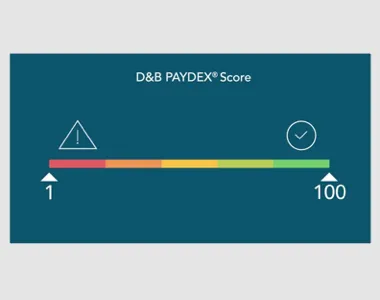As a small business owner, you know the importance of a good credit score. Your business's credit score is a crucial factor that suppliers consider when deciding on credit limits and payment terms. The Dun & Bradstreet PAYDEX Score is a key player in this space, and understanding how to improve it can open up new opportunities for your business.
What is the D&B PAYDEX Score?
Dun & Bradstreet (D&B) is the biggest business credit bureaus in the US. They've been providing business credit reports for over 150 years, and their D-U-N-S number has become a standard ID for American companies. The PAYDEX Score, a proprietary score calculated by Dun & Bradstreet, is a dollar-weighted indicator that shows your company's past payment performance.
The score is based on "trade references," which are records of your payment experiences submitted by your suppliers and vendors to D&B. These records can include payments made on time, early payments, or even overdue debts and bills sent to collections.
The PAYDEX Score ranges from 1 to 100, with 100 being the highest possible score. Scores are categorized into three risk levels:
- High risk (0-49): Indicates a high chance of late payments.
- Moderate risk (50-79): Indicates a moderate chance of late payments.
- Low risk (80-100): Indicates a low chance of late payments.
Can You Directly Improve Your Score?
Many businesses try to improve their scores by submitting their own payment records to Dun and Bradstreet. However, D&B doesn't trust these self-reported payments and will try to contact your suppliers to verify the information. This process often fails because suppliers are busy and emails can get lost.
You can also dispute trade references you think are incorrect – if you can find them. As this article is being written, the capability to review trade references submitted by others is NOT available on D&B’s free dashboard.
So, what can you do? There are four foundational steps you can take to build a better score.
Step 1: Claim or Request Your D-U-N-S Number
Before anything else, you need a D-U-N-S number. If your business has been around for a while, there's a good chance D&B has already assigned you one. You can use the D&B Lookup service to find your company. If you don't have one, you can request a new D-U-N-S number through their service.
This first step is easy and free:
- Use the D&B Lookup service to find your company. If you can’t find it, then you’ll have an option to get a new DUNS number.
- When you find your company, you’ll have the option to View / Edit Company Information.
- You’ll be asked to create an account, or you log in if you already have one.
- Now you’ll be able to verify and update some basic information about your company.
Step 2: Use D&B Credit Insights Free
After claiming your D-U-N-S number, you'll have access to the My D&B dashboard, which includes the Credit Insights Free product. This tool gives you a limited look into D&B's analysis of your company's scores, ratings, and payment history. You'll also be notified when your scores change. While you won't see all the details with the free plan, it still gives you a peek into what your suppliers see when they check your D&B report.
This is a valuable small business tool for credit management and understanding your customer data.
Step 3: Join D&B's Global Trade Exchange
You might know that some large companies report their customers' payment performance to D&B, but did you know your business can too? Joining the Global Trade Exchange is a great way to experience what you’ll be asking your suppliers to do. It also helps you clean your own customer list, make smarter credit decisions, and lower the risk of fraud. Read Truverto’s article on Unlocking the Power of Trade Payment Data Exchanges for more details.
To join, your company needs to:
- Offer payment terms (trade credit) to other businesses, not just consumers.
- Have more than one year of sales history.
- Have more than 50 customers.
You can send data to D&B manually each month, or use Truverto to automate the process. Truverto can also sync D&B information back into your accounting systems, such as QuickBooks, Microsoft Dynamics Business Central, or Acumatica, to keep your customer records clean and updated.
Step 4: Ask Your Suppliers to Report Your Payment History
The most effective way to improve your PAYDEX Score is to pay your bills on time and ask your suppliers to report your payment history to D&B. This process is becoming easier and more valuable.
Your suppliers will need to satisfy the same Global Trade Exchange requirements described in Step 3, which many of your suppliers probably do. They will start by providing a year's worth of your payment history and then continue submitting monthly reports. This can be done manually, through a custom automation, or by using Truverto.
Final Thoughts
You can’t pay to fix your D&B score. But by participating in the trade credit ecosystem, keeping your records clean, and encouraging data sharing, you can help shape a more accurate and trustworthy business profile.






